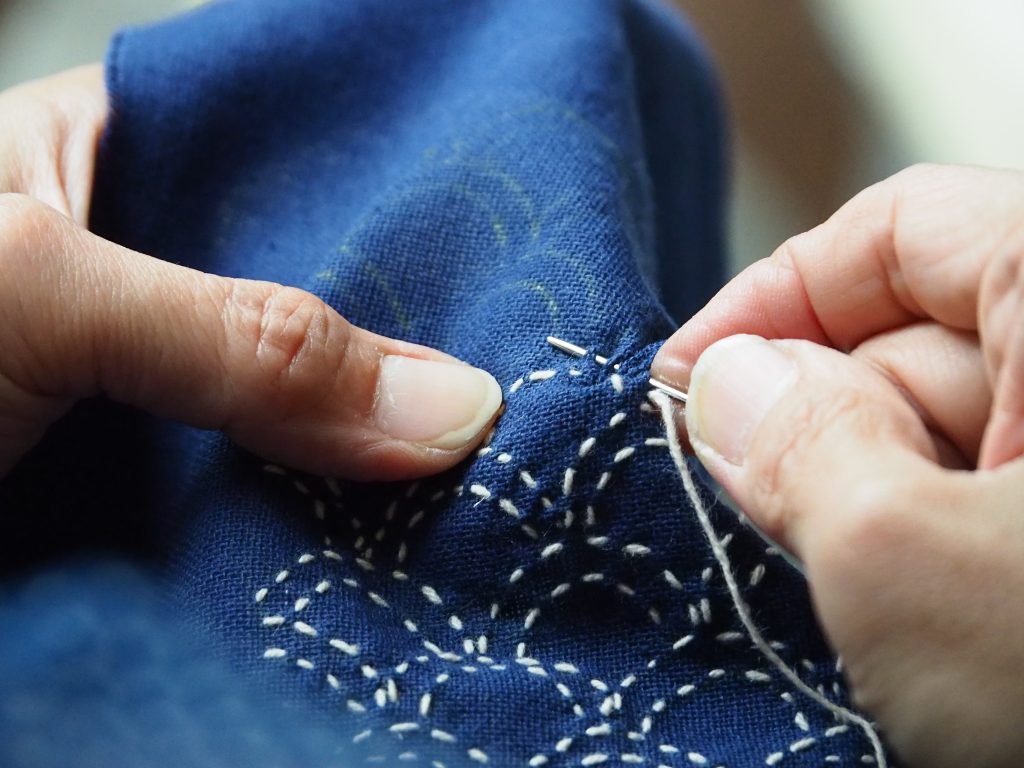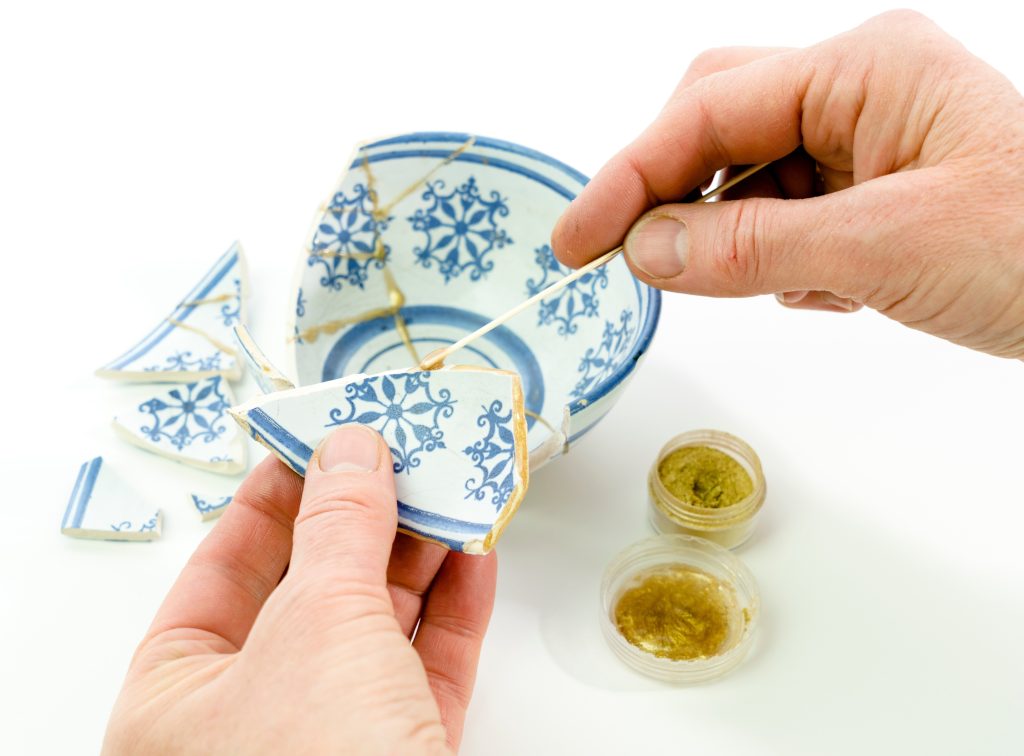Visible mending practices hold lessons for how we care for textiles, but how might they inspire ways we design and care for learning in universities?
As a learning designer, I have increasingly seen the metaphor and ethic of mending as a useful lens to think about curriculum, pedagogy and student experience. I also teach Introduction to Fashion and Sustainability, where students explore repair, mending and circular design as practical pathways to sustainability – an experience that continually informs my learning design work.
Over the past year our team has shifted from bespoke postgraduate builds to uplifting high-enrolment undergraduate subjects. This strategy favours incremental innovations that academics can maintain independently and that can scale across large cohorts. It reflects the mending and care of something that still holds great value and can be made more durable for future use.
Repair over replacement
My research focuses on traditional mending techniques such as sashiko, boro, kintsugi and darning, and their links to sustainability. These methods are all grounded in valuing what already exists rather than discarding it. Boro textiles, born from necessity, layered patches and running stitches across generations, turning scarcity into durability and meaning. Sashiko, with its deliberate stitches, turns repair into decoration, making resilience itself visible.



In learning design, we have adopted the same stance. Rather than defaulting to blank-sheet rebuilds, we now prioritise ‘mending’ existing high-enrolment subjects: refining structures, scaffolding learning and adapting assessments in ways that are sustainable and staff-maintainable. This incremental-innovation approach creates student- and staff-friendly designs that are scalable and enduring, echoing the logic of curriculum renewal rather than curriculum disposal.
Strategic stitches in a WIL subject
Because Exercise Assessment, Prescription and Delivery is a WIL subject with 2 delivery streams and large cohorts, students generate a high volume of practical, time-sensitive questions. To provide consistent support, the Education Portfolio’s Learning Design Team stitched in the following visible elements:
- H5P progress checklists – so students can track readiness while teachers can monitor at a glance
- comprehensive FAQs to address recurring queries across both streams
- an updated Get Started module to orient learners from Day 1
These stitches are placed at known friction points and are designed to be seen. This strengthens the existing fabric rather than replacing it.
Community, resilience and failure
Visible mending traditions often emerge from community practices, where repair was part of everyday domestic and social life. Boro was stitched within households; sashiko carried symbolic motifs of protection and prosperity. Similarly, learning design is rarely the work of a single individual; it is collaborative, involving academics, students and professional staff. Like mended garments, courses can embody identity and belonging when shaped through collective effort.
Mended garments can also embody intergenerational continuity, layered with repairs that tell a story of use and adaptation. This resonates with higher education as an evolving fabric. Every new design builds on institutional history and previous cohorts while responding to present challenges.
Sustainability scholars note that practices like visible mending are not just about conservation, but about cultivating resilience – adapting resources and relationships for the long term. Learning design, too, is about cultivating resilient systems. It can be designed to support diverse students across shifting contexts, including new challenges like Generative AI.
One response to the disruptive presence of GenAI, highlighted in a recent New York Times article, has been a return to more traditional forms of assessment such as oral and invigilated exams. This is, in effect, a form of educational mending. It reaches back to older techniques – not to replicate the past, but to stitch them into the present fabric of higher education in response to new vulnerabilities. In the same way that sashiko borrows stitches from tradition to reinforce worn cloth, some universities are borrowing from their own history to strengthen assessment integrity in the age of AI.
Aesthetics, narrative and sustainability
Kintsugi’s philosophy is that cracks are not flaws to hide, but opportunities to create something stronger and more beautiful. This maps closely to the pedagogical principle of formative learning: mistakes and failures are not dead ends, but golden seams that carry forward into deeper understanding.
Visible mending is not merely utilitarian; it is aesthetic. Each stitch, every patch, tells a story. Likewise, effective learning design moves beyond functional delivery to create experiences that are meaningful and engaging. The design itself can be part of the narrative of education: not just how students acquire knowledge, but how they are transformed through the process. Moreover, at its core, mending resists disposability. Kate Fletcher and Ingun Grimstad Klepp argue that visible mending challenges the culture of ‘fast fashion’ by emphasising longevity and attachment. In higher education, sustainable learning design similarly resists ‘fast fixes’ and instead values equity, accessibility and adaptability – approaches that nurture human potential over short-term efficiency.
The metaphors between visible mending and learning design are not just poetic; they point to a shared philosophy. Both are about working with what exists, embracing imperfection, making processes transparent, building resilience and embedding sustainability and care. Just as a repaired garment becomes more valuable through its history, a well-designed learning experience becomes more meaningful through the visible labour of adaptation and collaboration. This philosophy is at the heart of my research into visible mending practices and sustainability, which I see as offering new ways to think about how we design learning in universities.
